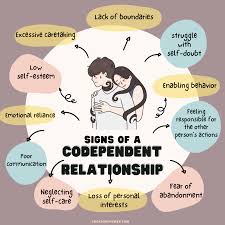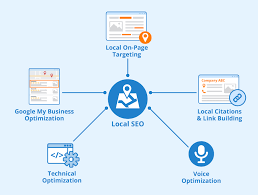You can create and launch a great product, but it turns out that it is not in demand among the target audience. In order not to waste resources, you need to find and relieve customers’ pain points.
What is client pain?
What are the types of customer pains?
Why you need to know your clients’ pain points and needs
How to identify customer needs and pain points
What to do when you have identified your clients’ pain points
Expert advice
What is client pain?
Table of Contents
Discomfort, problems, fears that real or potential buyers of a product or service face are called customer pains in marketing. A person may be worried about self-doubt, lack of time for household chores, a frequently ill child, or a tree outside the window that makes the apartment constantly dark. Not all customer pains are important for business, but only those that the client can “cure” with the help of the company’s product or service.
Read Also:Digital Marketing: What It Is and How It Works
What are the types of customer pains?
Typically, customer pain points are divided into four categories: finances, efficiency, purchasing process, support.
1. Finance
This category includes the customer’s concerns related to money. For example, he wants to save on delivery, so he places an order at a pick-up point, not home. Or he does not want to overpay for the brand, so he looks for a TV with similar characteristics, but cheaper.
2. Efficiency
This group includes the customer’s problems that the product or service should solve. For example, a person does not have time for daily cleaning and needs a robot vacuum cleaner, but the buyer doubts whether the device will cope with the hair from his beloved cat.
3. Purchase process
This category includes fears and discomfort that the client experiences at the purchase stage: for example, “what if it’s a scam?”, “I want to pay the courier by card, but the online store doesn’t have this option”, “inconvenient intervals for online classes”.
4. Support
This group includes fears related to what happens after purchasing a product or service. For example, online students who are learning new professions often worry that they won’t be able to find a job after completing their studies.
According to this classification, the client’s pain can be associated with the following areas:
● Physical or mental health
When a person has a toothache or a backache, he goes to a pharmacy or a doctor to get pills or another solution to his problem. At the same time, he is also accompanied by fears from the previous categories: “How much will a doctor’s appointment and medications cost?”, “Will the pills really help?”, “Other examinations will probably be needed.”
A psychological condition may be troubling, for example, self-doubt that cannot be overcome. In this case, the client’s problems can be solved by a psychologist or, if the uncertainty is related to appearance, by a stylist, hairdresser, or cosmetologist. It turns out that different specialists and businesses can work with the same pain.
● Lack of resources
For example, a person lacks money and looks for ways to cope with this problem. In such a situation, some take investment courses, others improve their qualifications, and others find new sales channels. When there is not enough information, they buy books or take online courses.
● Recognition and self-expression
When basic needs are met, there is an opportunity to satisfy others. For example, for a landscape designer, this will be a victory in a competition for the best landscaping project for city parks, and for a blogger, many likes and comments under a new post.
Understanding the intricacies of studying the target audience and its needs is not an easy task. In the marketing courses at Yandex Praktikum, students are assisted by practicing marketers: they teach how to use relevant tools, analyze mistakes, and provide feedback on projects. And if you have not yet decided on a direction, then the free course “What profession in marketing to choose” will help you understand which professions are in demand now, what different specialists do, and how to build a successful career.
Why you need to know your clients’ pain points and needs
In an ideal scenario, marketers first study the target audience , and then the company produces a product or product line that helps relieve customers’ pain points. In practice, the opposite is often true: first they release the product, and then they look for customers. As a result, there are no sales, and potential buyers do not know that there is a product or service on the market that can solve their problems.
For example, experts have developed an application for delivering farm produce from Moscow markets. The target audience has a problem: they need fresh vegetables and fruits delivered to their home or office on the same day. The creators of the application know how to solve this problem, but users do not understand this, because nowhere is it said that the order will be delivered in just three hours to any area.
The marketer’s job is to understand the true needs of the client so that the company can create a relevant and necessary product. Then convey to the client how the product or service will solve the problem and encourage them to buy.
How to identify customer needs and pain points
It happens that product creators rely only on their own pains and needs, which do not always coincide with the problems of the target audience. It turns out that the company solves non-existent problems and the product does not sell. To find out the main pains of customers, you can use the following methods:
● Conduct surveys or questionnaires
This option is suitable if the business already has clients. Depending on the size of the company and the number of customers, you can conduct a survey on social networks or communicate with clients in person.
The first method is not the most accurate, because subscribers include not only customers, and people often answer at random or vote to see the answers of others. This option for identifying customer pain points is suitable if the business is just entering the market, and you can change or improve the product in accordance with the needs of the target audience.
● Explore thematic communities in social networks and forums
Most of the platform subscribers are the target audience of some product. For studying, it is better to choose communities with many active readers who love discussions. To find out what “hurts” the audience, you need to read questions, comments and reviews from subscribers, ask clarifying questions.
For example, an online school is developing a new course for those who want to master the profession of a copywriter. In order to understand the pain points of clients and create a product that relieves them, the school’s Internet marketer joins the “Overheard Copywriting” community and collects information about what beginning copywriters and those who are still looking into this profession want, fear, or dream about. Perhaps, after analyzing the needs, it will be necessary to develop an additional course module on how a copywriter can find expensive orders.
● Analyze search queries
The information that users search for in search engines will help to understand what fears and needs people have related to the product, and what pains it can relieve. Based on this data, a marketer can form an offer for buyers and a content plan for social networks . You can search for queries in the Yandex Wordstat service.
● Read reviews
According to research , 38% of buyers will write a review if a product or service does not meet their expectations. Therefore, it is worth paying attention to negative reviews. They will help you see the weak points of the product and improve it in accordance with customer needs. Reviews can be collected on forums, marketplaces, geoservices, specialized sites such as otzovik.com, irecommend.ru.
● See what your competitors are doing
In order not to lose sight of how and what problems of clients are solved by companies from a similar sphere, an Internet marketer analyzes advertising offers, sales posts, content in general. If you try to mindlessly copy the ideas of competitors, there is always a risk of making a mistake: even when companies work in the same sphere, the target audience and its pains may differ.
● Constantly analyze the target audience
As a rule, a product or service does not have a target audience “for centuries”: the company develops, releases new products that become popular with new customers. If marketers and the business owner understand that sales have stalled or, on the contrary, have suddenly increased, it is worth analyzing the target audience again. The same is done when a new product is launched on the market.
Read Also:Why do you need a customer journey map and how to build it correctly
What to do when you have identified your clients’ pain points
Customer pain points should be used to promote the product on the market. There are several options for doing this:
● Take care of customers
When a marketer understands what is the target audience’s “pain,” they can create sales scripts — scenarios that salespeople or sales managers use to communicate with clients and close deals. For example, it is known that clients’ pain points are high prices. During a conversation with a buyer, a manager can ask: “Are you not staying within your budget or is it difficult for you to pay the entire amount at once?” After that, you can offer to arrange an installment plan or pay in parts.
● Formulate advertising offers
A product can solve one or more pain points of the target audience. Usually, the main problem is put in the title on the website, landing page or in the description of the account on social networks. For example, a network of dental clinics analyzed the pain points of its audience and the main one turned out to be the high cost of services. To solve this pain point for customers, the company placed its unique selling proposition on the main page of the website: their services are on average 32% cheaper than in clinics in Moscow and the Moscow region.
Another pain point that patients have is finding a clinic and a doctor they can trust. The company works with this objection in other sections, for example, by honestly reporting on visitors’ reviews.
● Develop a sales strategy
For example, the manufacturer of professional hair cosmetics “Lokon” worked only with beauty salons and professionals: stylists, hairdressers, colorists. 2020 came, the lockdown began, beauty salons closed, and it was necessary to urgently decide how to make money in such conditions. Then the company changed its promotion strategy. During the lockdown, the need for customers to take care of their hair did not go away. The company offered hairdressers to buy cosmetics from “Lokon” and sell to customers with individual consultation and selection. As a result, the company was able to solve the problems of different audiences with the same product. This happened because marketers knew the pain points of each segment.











